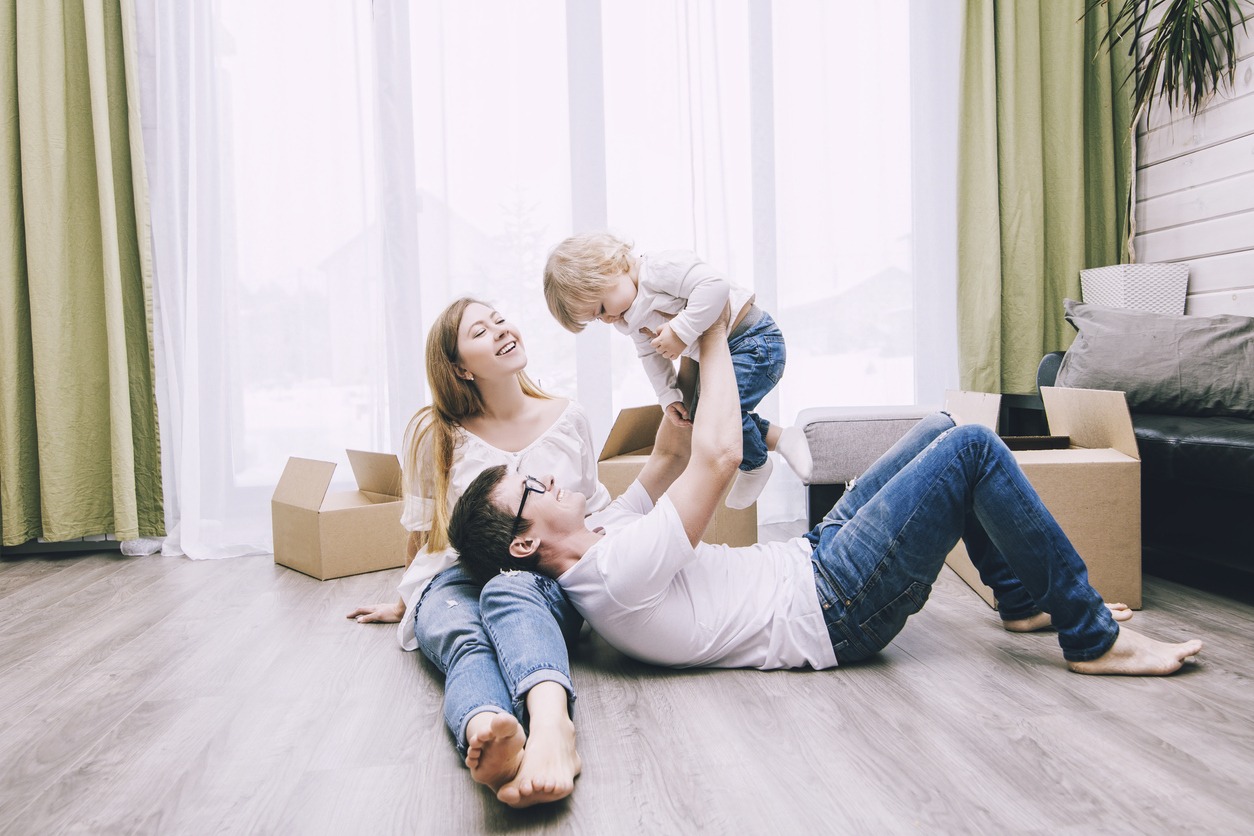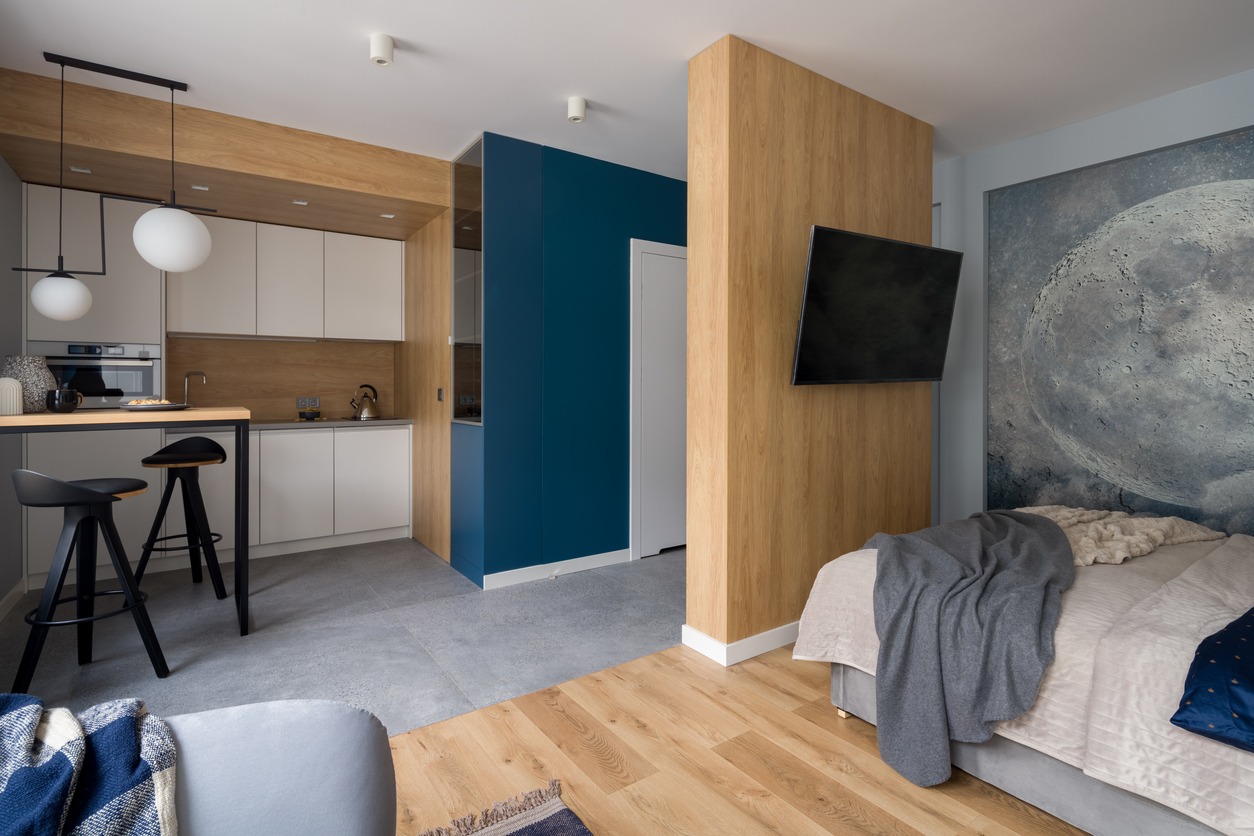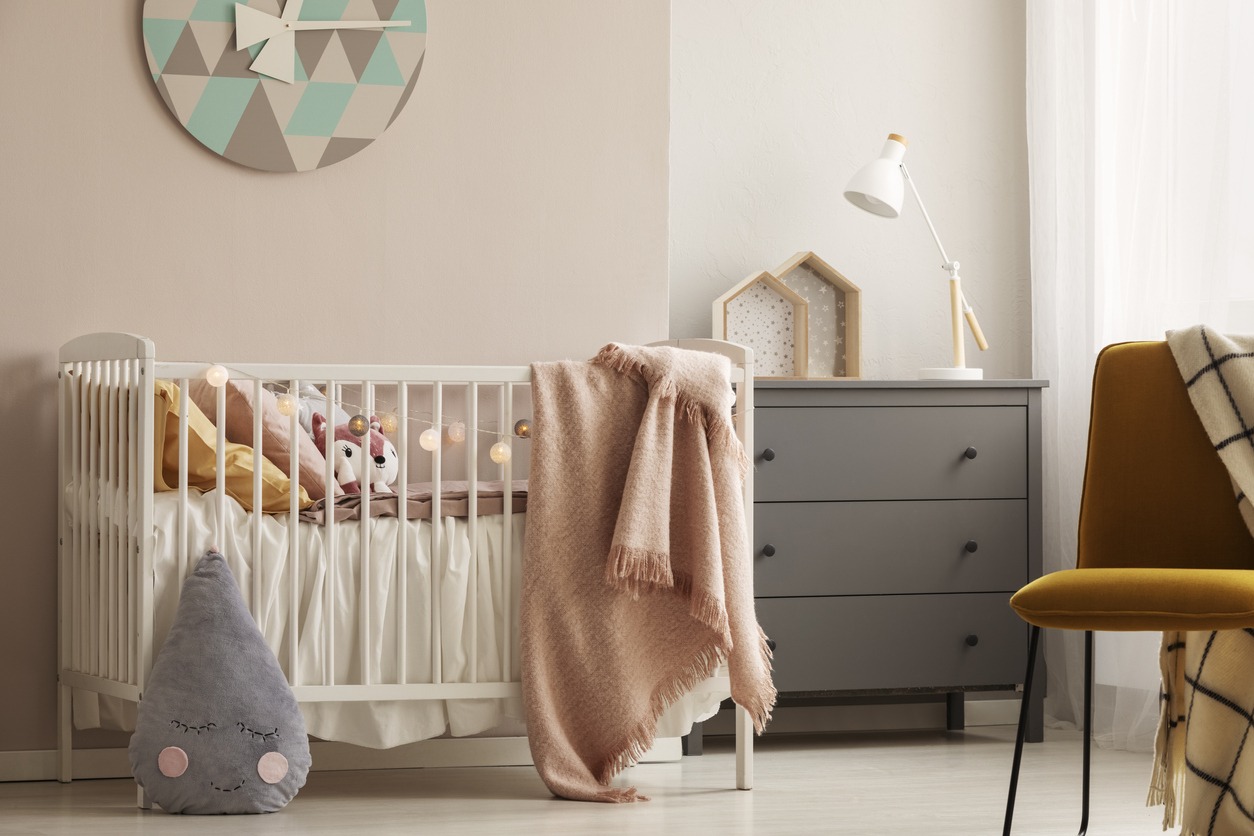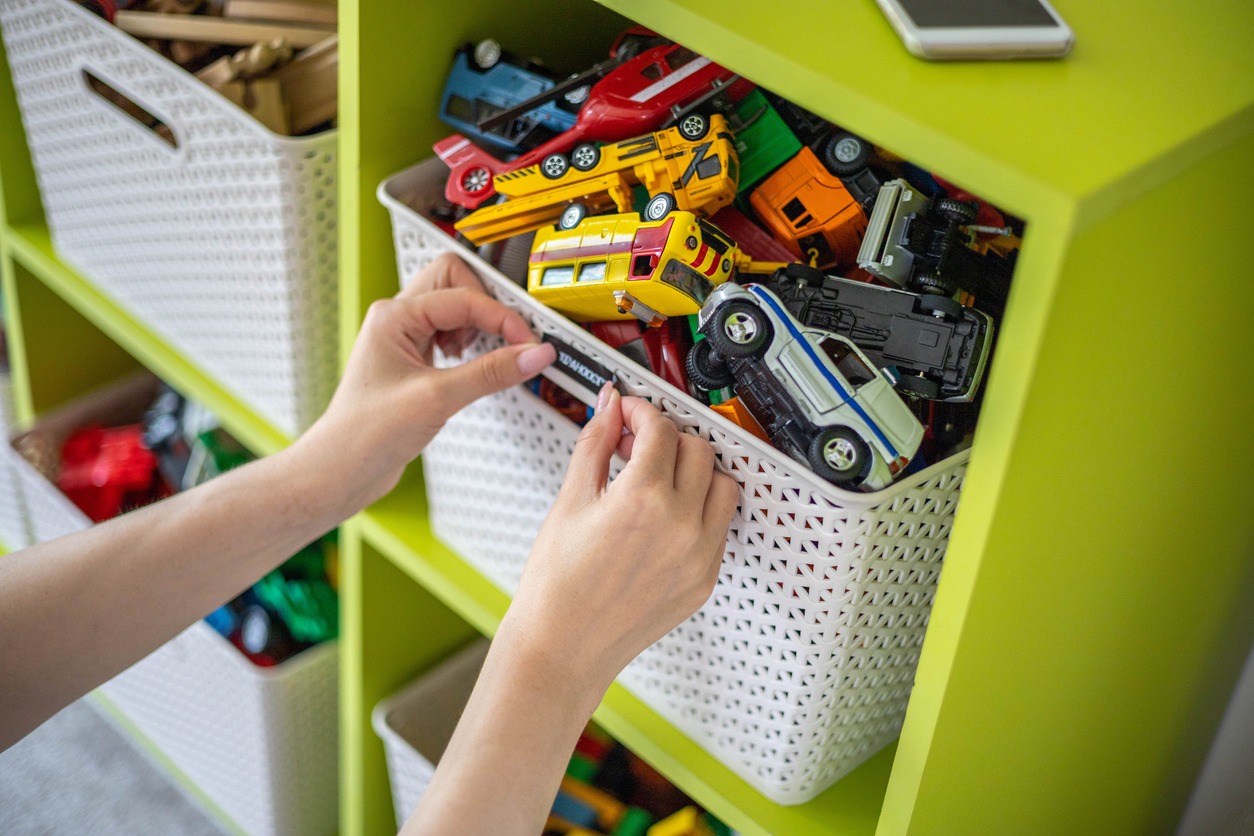Living in a studio apartment with a baby might seem daunting at first glance. The limited space, absence of separate rooms, and the need to accommodate not just your own belongings but also a whole suite of baby essentials can be overwhelming. However, with a bit of creativity, strategic planning, and a positive mindset, transforming your compact living space into a cozy, functional home for you and your baby is entirely achievable.
This article aims to guide new and expecting parents through the nuances of studio apartment living with a baby. We’ll explore practical tips for maximizing your space, ensuring safety, and maintaining a semblance of adult space amidst the baby gear. The goal is to provide you with ideas and solutions that not only make life in a studio apartment with a baby manageable but also enjoyable and full of cherished moments.
Understanding Your Space
Understanding your space is the foundation of effectively living in a studio apartment with a baby. This process involves more than just taking measurements; it’s about envisioning how each square foot can be optimized to serve multiple purposes without feeling cluttered or cramped. Here’s how you can start:
Assess Your Layout
Begin by assessing the current layout of your apartment. Identify which areas receive more natural light, which corners are quieter, and where you have the most floor space. These factors can help determine the best spots for your baby’s sleep area, a play zone, or where you might fit extra storage. Consider drawing a rough floor plan to visualize the space and experiment with different layouts.
Embrace Multi-Functional Spaces
In a studio apartment, each area must serve multiple functions. For instance, a corner of your living space can double as a play area during the day and a relaxation nook in the evening. Furniture that can be easily moved or folded away can transform a dining area into a play space in no time.
Invest in Multi-Purpose Furniture
Choose furniture that offers more than one function. A sofa bed can provide seating during the day and transform into a bed at night. Ottomans with storage can hold baby items while also serving as seating or a footrest. A fold-down table mounted to the wall can serve as a dining table, a desk, or even a changing station, depending on your needs at the moment.
Declutter Relentlessly
In small spaces, clutter can quickly make the environment feel chaotic and even smaller than it is. Take the time to declutter and keep only what you truly need or love. This might mean adopting a more minimalist lifestyle or finding clever storage solutions for items you can’t part with. Regularly reassessing what you have and decluttering will help maintain a sense of openness and calm in your apartment.
Create Zones
Even in a single room, it’s possible to create distinct “zones” for different activities. Use rugs, furniture arrangements, or even different lighting to delineate areas. For example, a soft rug and a couple of floor cushions can mark the play area, while a different rug and a coffee table set up the living zone. This helps to mentally separate activities and can make the space feel larger and more organized.
Think Vertically
When floor space is limited, look up. Utilize vertical space for storage with tall shelving units, hooks, and wall-mounted shelves. This keeps the floor clear for safer baby play areas and makes it easier to move around.
Understanding and optimizing your space is crucial for creating a functional and comfortable living environment in a studio apartment with a baby. By carefully considering your layout, making smart furniture choices, and staying organized, you can create a home that feels spacious and welcoming for both you and your child.
Creating a Baby-Safe Environment
Creating a baby-safe environment in a studio apartment is paramount, as the limited space means your baby will be within reach of many potential hazards. A baby-safe space is not only about ensuring physical safety but also about creating a healthy and stimulating environment for your baby to grow and explore. Here are key steps to achieve this:
Baby-Proofing Essentials
Start with basic baby-proofing measures that can be applied throughout your apartment:
- Secure Furniture: Anchor heavy furniture to the wall to prevent tipping, especially dressers, bookshelves, and TV stands.
- Cover Electrical Outlets: Use outlet covers to prevent curious fingers from poking into electrical sockets.
- Soften Sharp Edges: Apply corner guards on furniture with sharp edges, such as coffee tables, countertops, and TV stands.
- Secure Loose Cords: Keep cords from blinds, curtains, and electrical appliances out of reach to prevent strangulation hazards.
- Lock Cabinets and Drawers: Use child-proof locks to keep babies away from potentially dangerous items like cleaning supplies, sharp objects, and small choking hazards.
Safe Play Areas
In a studio apartment, your baby’s play area is likely to be part of your living space. Make this area safe by:
- Using a Play Mat: Provide a soft, clean surface for your baby to play on. Non-toxic foam mats can cushion falls and define the play area.
- Choosing Safe Toys: Ensure that toys are age-appropriate and free from small parts that could be choking hazards. Regularly inspect toys for wear and tear.
- Setting Boundaries: Use baby gates or playpens to create a safe, contained area for your baby to explore, especially if you cannot supervise directly for a moment.
Air and Environmental Quality
Maintaining good air quality is crucial, especially in a smaller space:
- Ventilation: Ensure good airflow by regularly opening windows or using an air purifier to reduce indoor pollutants.
- Non-Toxic Cleaning Products: Opt for natural, non-toxic cleaning products to keep the air and surfaces safe for your baby.
- Houseplants: Some houseplants can improve indoor air quality, but make sure they are non-toxic and out of reach, as some can be poisonous if ingested.
Noise Levels
Managing noise levels can help create a calm environment for your baby to sleep and play:
- Soundproofing: Consider using rugs, heavy curtains, and wall hangings to absorb sound. White noise machines can also help mask disruptive noises.
- Mindful Living: Be mindful of noise levels, especially during your baby’s nap times. Using headphones for TV or music can help keep the environment serene.
Lighting
Proper lighting is important for your baby’s development and to create a safe environment:
- Natural Light: Make the most of natural light, which is beneficial for your and your baby’s mood and health. Use sheer curtains to diffuse bright sunlight without darkening the room.
- Night Lights: Soft night lights can provide gentle illumination for late-night feedings or diaper changes without disturbing your baby’s sleep cycle.
Creating a baby-safe environment in a studio apartment involves being mindful of potential hazards and making adjustments to ensure your space promotes safety, health, and development. With these measures in place, your studio apartment can be a safe, cozy, and stimulating home for your baby to grow and explore.
Sleeping Arrangements
Navigating sleeping arrangements in a studio apartment with a baby requires creativity and flexibility, given the limited space and lack of separate bedrooms. The goal is to ensure your baby sleeps safely and comfortably while also considering the sleep needs of the parents. Here are some options and considerations for setting up sleeping arrangements:
Co-Sleeping
Co-sleeping can be a convenient option in a studio apartment, but it’s important to follow safe co-sleeping guidelines:
- Dedicated Co-Sleeper or Bassinet: Use a co-sleeper attached to the side of the bed or a standalone bassinet next to the bed to keep the baby close without the risks associated with bed-sharing.
- Safety First: Ensure the co-sleeping setup meets safety standards, with a firm mattress, no soft bedding, and no gaps where the baby could become trapped.
Cribs and Mini Cribs
A traditional crib might be too large for a studio apartment, making a mini crib a more space-efficient choice:
- Mini Cribs: These are smaller than standard cribs but still offer a comfortable sleeping area for the baby. Many models have wheels for mobility and can be folded when not in use.
- Convertible Options: Consider a crib that converts into a toddler bed to extend its usefulness as your child grows.
Portable and Travel Cribs
Portable cribs are versatile options for small spaces:
- Portability: These cribs can be easily moved or stored away, making them ideal for multifunctional spaces.
- Dual Purpose: Some models come with attachments like changing stations and nappers, adding functionality without taking up more space.
Room Dividers and Partitions
Creating a semblance of a separate nursery within your studio can provide privacy and help establish a sleep routine:
- Curtains or Screens: Use ceiling-mounted curtains or folding screens to section off a nursery area. This can help reduce disturbances and define sleep areas without permanent modifications.
- Noise Management: Consider a white noise machine or soft music in the baby’s area to mask household noises and promote relaxation.
Sleep Safety and Comfort
Regardless of the chosen sleeping arrangement, always prioritize safety and comfort:
- Firm Mattress: Ensure the baby’s sleep surface is firm and covered with a fitted sheet, with no loose bedding or soft toys.
- Temperature Regulation: Maintain a comfortable room temperature and dress your baby appropriately for sleep to prevent overheating.
Flexibility for Growth
Be prepared to adapt sleeping arrangements as your baby grows and their sleep needs change. What works for a newborn may not be suitable for an active toddler, so flexibility is key.
In a studio apartment, efficient use of space combined with adherence to safe sleep practices can create a comfortable sleeping environment for your baby. Whether opting for co-sleeping with a bassinet, a mini crib, or a portable solution, the focus should always be on safety, comfort, and making the most of the available space to ensure restful nights for both baby and parents.
Storage Solutions
Efficient storage solutions are crucial in a studio apartment, especially when accommodating a baby’s numerous essentials. The key is to maximize space without cluttering your living area, ensuring that baby items are organized and accessible but not overwhelming. Here are some strategies for optimizing storage in your studio apartment:
Vertical Storage
Make use of vertical space to keep the floor area clear for safe baby play and mobility:
- Tall Shelving Units: Utilize tall bookcases or shelving units to store books, toys, and decorative items. Ensure these are securely anchored to the wall to prevent tipping.
- Wall-Mounted Shelves and Hooks: Install shelves and hooks on walls to hang baby clothes, towels, or baskets containing diapers and wipes. This keeps essentials at arm’s reach without taking up valuable floor space.
Under-Bed and Furniture Storage
The space under your bed and other furniture can be a hidden storage goldmine:
- Under-Bed Storage Boxes: Use slim storage containers on wheels to store out-of-season clothing, extra diapers, or baby linens under the bed.
- Furniture with Built-In Storage: Opt for ottomans, benches, or beds with built-in storage compartments for an efficient way to hide away baby gear and other household items.
Multi-Functional Furniture
Choose furniture that serves more than one purpose, incorporating storage wherever possible:
- Storage Ottomans and Coffee Tables: These can double as seating or a play table for your baby while providing ample storage inside.
- Convertible Changing Tables: A dresser with a removable changing table top can serve as both a changing station and clothing storage, adapting as your baby grows.
Over-Door Organizers
Maximize the use of door space with hanging organizers:
- Closet Doors: Install over-the-door organizers to store smaller items like shoes, accessories, or baby care products, keeping them organized and out of sight.
- Pantry and Bathroom Doors: Use these spaces for additional storage of toiletries, baby bath items, or feeding supplies.
Closet Organization
A well-organized closet can store much more than you might think:
- Hanging Closet Organizers: These add shelves and compartments within the closet, ideal for storing folded baby clothes, blankets, and toys.
- Dual-Level Hanging Rods: Installing a second hanging rod at a lower level doubles the hanging space, making it perfect for baby clothes.
Declutter and Rotate
Regularly assess what you and your baby use and need, decluttering items that are no longer necessary:
- Seasonal Rotation: Keep only the current season’s clothing and gear accessible, storing away out-of-season items to reduce clutter.
- Donation and Sale: As your baby outgrows items, consider donating or selling them to make room for age-appropriate essentials.
Use of Baskets and Bins
Baskets and bins are versatile for categorizing and concealing various items:
- Labeled Bins: Use clear bins with labels for easy identification of contents, ideal for toys, books, and clothing.
- Decorative Baskets: These can be placed on shelves or under tables to hold toys or blankets, adding to the decor while providing storage.
Incorporating these storage solutions allows for a tidy and organized studio apartment where both you and your baby have the space to live and play comfortably. By thinking creatively and making the most of every inch of space, you can create a functional, clutter-free environment that accommodates all of your baby’s needs.
Tips for Daily Living
Living in a studio apartment with a baby requires adaptability and smart strategies to manage daily routines smoothly. Here are some practical tips for daily living in a compact space with your little one:
- Establish a Routine: Creating a consistent daily routine helps organize your day and provides a sense of security for your baby. Regular schedules for feeding, sleeping, and playing help manage your time effectively and ensure your baby’s needs are met. You should also establish a calming evening routine to help your baby wind down and signal that it’s time for sleep, even in a shared living space.
- Efficient Diapering and Bathing Stations: Set up convenient areas for diaper changes and bathing that don’t disrupt the flow of your living space. Use a foldable changing mat with a basket of supplies that can be easily moved and stored away when not in use. For young infants, consider using the kitchen sink with a compact infant tub, saving space and making bath time easier without a full-sized tub.
- Smart Feeding Solutions: Whether you’re breastfeeding, bottle-feeding, or starting solids, create a comfortable and clean feeding area. Designate a comfortable chair with armrests as your feeding spot, which can also serve as a cozy reading nook. Opt for a clip-on high chair or a compact, foldable model that can be tucked away when not in use.
- Playtime and Stimulation: Engage your baby with interactive playtime that doesn’t require a lot of space. Keep a small selection of toys out and rotate them to keep your baby’s interest without cluttering the space. Create theme-based baskets with everyday items and toys for sensory exploration that are easy to store and swap out.
- Outdoor Time: Incorporate outdoor activities into your daily routine for fresh air and a change of scenery. Use a baby carrier or stroller for walks around the neighborhood, park visits, or running errands. Take advantage of local playgrounds for socialization and playtime in a new environment.
- Managing Noise and Sleep: In a shared living and sleeping area, managing noise levels is key to ensuring everyone sleeps well. Use white noise to mask household sounds and create a soothing sleep environment for your baby. Consider using earplugs or noise-canceling headphones if you need to work or watch TV while your baby sleeps.
- Keeping the Space Clean: Maintain a clean and hygienic environment with efficient cleaning habits. Implement a quick daily tidying routine to manage clutter and maintain a pleasant living environment. Use baby-safe, non-toxic cleaning products for regular cleanups, especially on surfaces your baby frequently touches.
- Socialization and Support: Stay connected with a support network for social interaction and assistance. Regular video calls with family and friends can provide social interaction and a sense of community. Join local or online parenting groups for support, advice, and socializing opportunities for you and your baby.
Living in a studio apartment with a baby can be a rewarding experience with the right approaches to daily living. By establishing routines, utilizing space-saving solutions, and maintaining a clean and engaging environment, you can create a nurturing and functional home for your growing family.
Conclusion
Raising a baby in a studio apartment presents unique challenges, but with creativity, organization, and adaptability, it can also be a deeply rewarding experience. By making smart use of space, establishing routines, and focusing on the essentials, you can create a safe, comfortable, and loving home for your little one. Remember, the warmth and joy of a family don’t depend on the size of the living space but on the memories and bonds you build within it.



